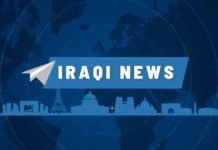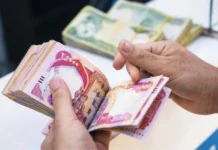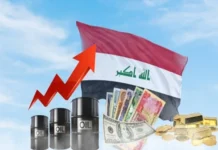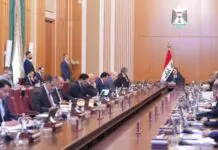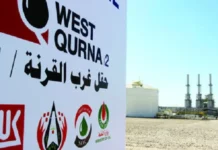Good Morning ,
Phase One Peace: Hostage Release, Summit Diplomacy & a Fragile New Order
The first phase of a U.S.-brokered ceasefire unfolds. Hostages are freed, leaders convene — but the roots of lasting peace remain fragile.
All Living Israeli Hostages Freed — Hamas Makes Final Handover
- All 20 remaining living Israeli hostages have been released under the ceasefire deal.
- Israel committed to releasing over 1,900 Palestinian prisoners in return, part of the phased exchange.
- The release was assisted by the Red Cross and coordinated across multiple sites in Gaza.
- Meanwhile, Hamas deployed fighters near hospitals during the release — a show of strength even amid truce efforts.
These exchanges are the visible fruit of the deal — gestures meant to build trust and validate negotiation over violence.
Diplomacy Accelerates: Trump, Egypt & Regional Summit
- Trump arrived in Israel, addressed the Knesset, and proclaimed “the war is over” in a dramatic speech.
- He then traveled onward to Sharm el-Sheikh, Egypt, for the Gaza Peace Summit, co-chaired with President al-Sisi.
- Over 20 regional and international leaders are expected to attend, though Netanyahu is not scheduled to go.
- Iran has publicly declined to attend the summit, signaling dissent within the regional alignment.
This diplomatic architecture attempts to transition conflict from the battlefield to negotiation tables.
Complexities Beneath the Surface
- Gaza’s future governance, disarmament, and security structures remain unresolved — the border lines are drawn, but who governs what is a looming question.
- Palestinian Authority leadership appears willing to support the ceasefire architecture, though Israel has resisted giving control to the PA.
- The differential participation of states (e.g. Iran skipping the summit) highlights fault lines in how this new order will be built.
- Internal dynamics in Gaza — displacement, reconstruction pressure, factionalism — might destabilize post-ceasefire progress.
Even when the guns fall silent, the variables of legitimacy, reconstruction, and security remain in flux.
How This Moves the Global Chessboard
- This peace phase is a test case for post-war order-building — who funds reconstruction, who governs Gaza, who enforces peace.
- The financial stakes are high: flows of aid, credit, and investment will become instruments of influence in the rebuilt terrain.
- Nations backing alternative financial orders (e.g. BRICS, asset-backed systems) may seek entry points in reconstruction and leverage in governance.
- If this deal endures, it could shift regional realignment — allowing non-Western powers to argue for a new balance of influence.
Peace isn’t passive — it’s contested territory where money, aid, governance, and narratives compete for legitimacy.
Why This Matters / Key Takeaway
This historic release of hostages and the summit diplomacy are more than symbolic — they mark the opening act of a realignment in the Middle East. As military confrontation recedes, what replaces it will define capital flows, alliances, and sovereignty for decades.
• The fragile peace sets the foundation for a new regional order.
• How reconstruction is led and financed will test whether this is merely a pause or a new chapter.
• The world is watching to see whether negotiation and capital, not force, reshape the region.
This is not just politics — it’s global finance restructuring before our eyes.
@ Newshounds News™ Exclusive
Sources
• The Guardian – Hamas releases 20 remaining hostages The Guardian
• Reuters – Hamas deploys fighters during release Reuters
• Reuters – Hamas freed the last 20 surviving hostages Reuters
• AP News – Living hostages and Palestinian prisoners are released AP News
• Reuters – Trump says war is over, hosts released
~~~~~~~~~
JPMorgan Unveils $1.5 Trillion Investment Plan: The U.S. Financial Powerhouse Re-Arms for the Next Era
The largest American bank is directing massive capital toward defense, energy, and quantum infrastructure — signaling that Wall Street is now aligning directly with U.S. national security goals.
Wall Street Turns Strategic
- JPMorgan announced a $1.5 trillion investment initiative aimed at revitalizing key U.S. industries — defense technology, energy transition, AI, and quantum computing.
- CEO Jamie Dimon stated the plan will “anchor America’s competitive edge” while preparing for economic and geopolitical volatility through 2035.
- The strategy prioritizes sectors viewed as dual-use — where economic output directly reinforces national defense and energy independence.
🌱 This signals that U.S. financial institutions are no longer just profit engines — they’re instruments of strategic statecraft. Wall Street’s capital flows are aligning with Washington’s new industrial policy.
The Economic Engine of Security
- Funding will target advanced manufacturing, semiconductors, rare-earth supply chains, and quantum-secure communication networks.
- JPMorgan described this as part of a “resilient capital architecture” designed to safeguard supply chains and energy grids.
- Dimon emphasized that “America’s future depends on finance that fortifies the real economy, not speculative bubbles.”
🌱 The plan effectively merges monetary and defense policy — planting seeds for a new era where finance becomes an extension of national resilience.
De-Globalization and the Great Re-Anchoring
- The initiative comes amid global fragmentation, as BRICS, China, and the Gulf nations push toward multipolar financial ecosystems.
- Analysts say the U.S. is re-anchoring domestic industry in anticipation of reduced global capital interdependence.
- Dimon’s remarks framed the move as “a generational pivot from financial globalization to financial sovereignty.”
🌱 This reflects the broader transition from global to regional finance — where economic power is rooted in domestic capability rather than outsourced efficiency.
BRICS, De-Dollarization, and Counterbalance
- JPMorgan’s strategy coincides with intensifying efforts by BRICS+ nations to reduce dollar exposure and create commodity-backed settlement systems.
- By funding U.S. energy and defense sectors, the bank aims to reinforce the dollar’s strategic backing — effectively turning investment capital into geopolitical counterweight.
- As Dimon noted, “The U.S. dollar’s strength must come from the strength of what it represents.”
🌱 While BRICS builds alternatives, the U.S. is planting the seeds of its own financial renewal — transforming capital markets into instruments of sovereignty.
Why This Matters
This move isn’t merely about banking — it’s a blueprint for financial resilience in a fractured world. JPMorgan’s $1.5 trillion plan positions U.S. capital as a tool of national strategy, not just market speculation.
If successful, it could redefine how private finance supports state power, setting a precedent for global capital alignment in an era of monetary fragmentation.
This is not just politics — it’s global finance restructuring before our eyes.
@ Newshounds News™ Exclusive
Sources:
• Reuters – JPMorgan unveils $1.5 trillion plan to boost investments in U.S. strategic industries (Oct 13 2025)
• Bloomberg Intelligence
• Financial Times Analysis
~~~~~~~~~
Seeds of Wisdom Team RV Currency Facts Youtube and Rumble
Newshound’s News Telegram Room Link
Follow the Gold/Silver Rate COMEX
Follow Fast Facts
Seeds of Wisdom Team™ Website

